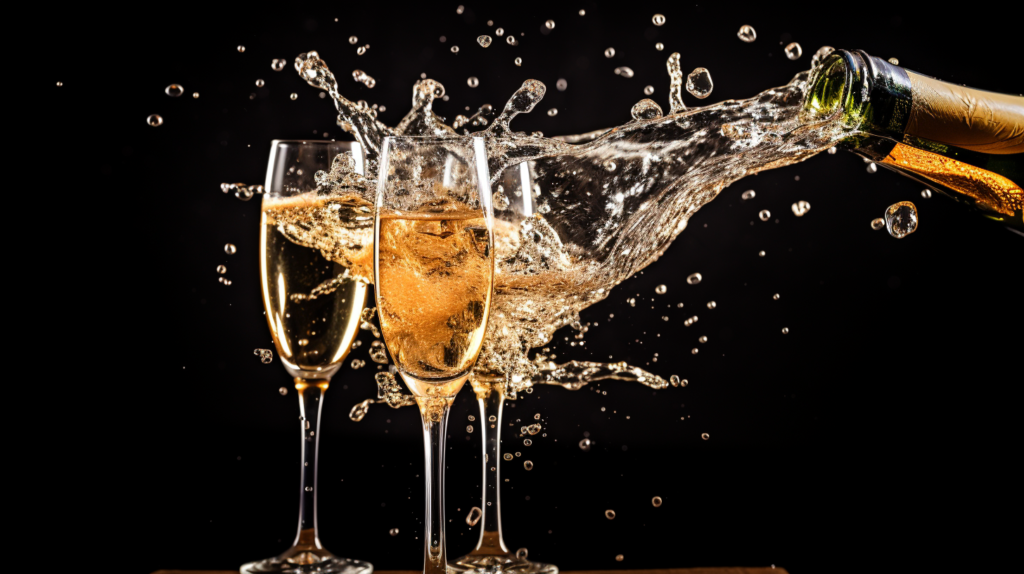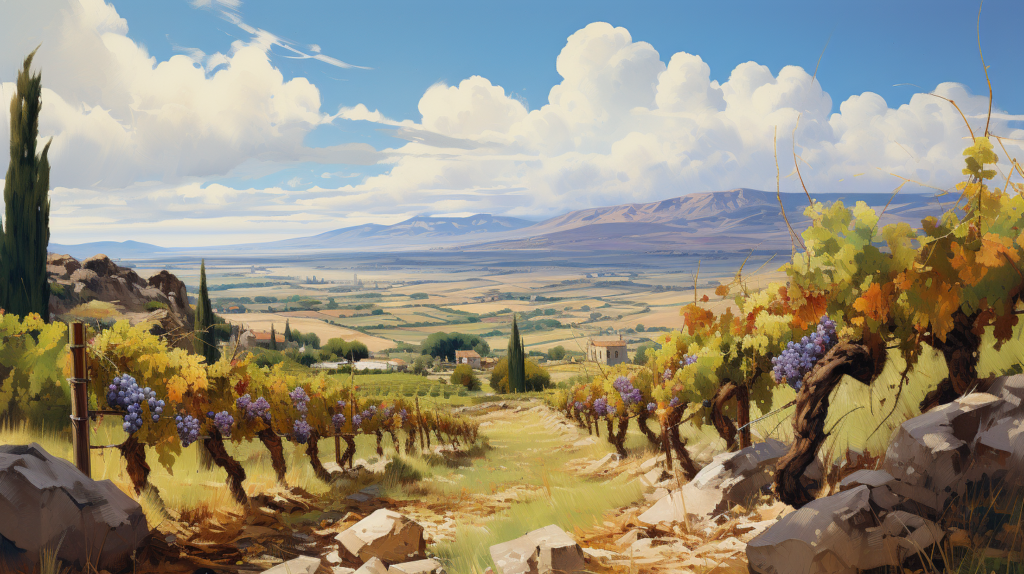SPARKLING WINES: a term that evokes celebration, luxury, and joy.
These effervescent beverages have captivated taste buds and hearts worldwide, becoming synonymous with festivity and elegance.
In this total guide, we’re popping the cork on the world of sparkling wines, revealing the secrets behind their allure and the intricate processes that create these bubbles of happiness. So, grab a glass, and let’s embark on this fizzy journey!
DEFINING SPARKLING WINE: A BUBBLY DISCOVERY
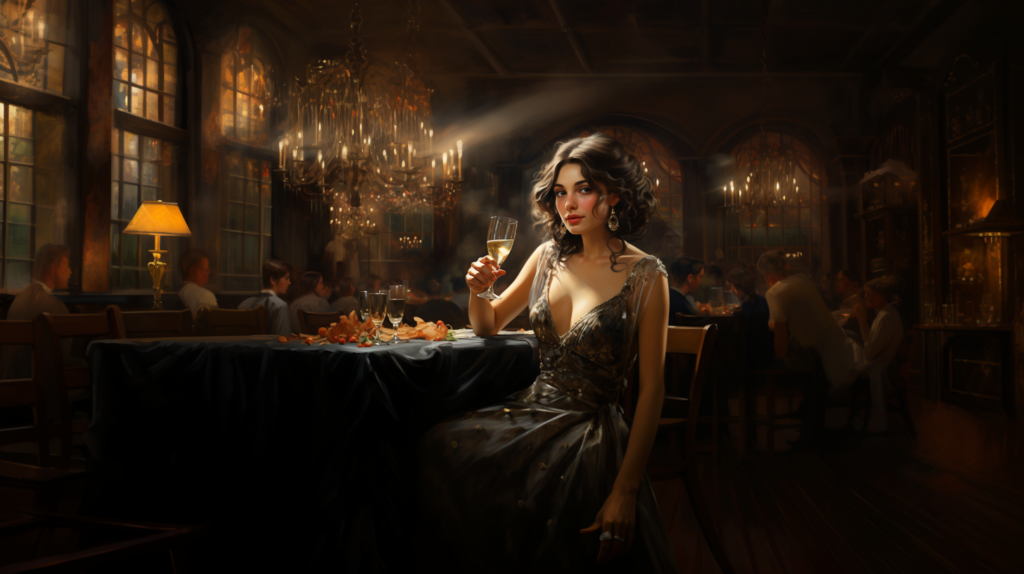
The world of sparkling wines is rich and multifaceted. From its intriguing history and diverse styles to the complex science behind its production, sparkling wine is more than just a celebratory drink; it’s a testament to human ingenuity and the pursuit of pleasure.
Whether you’re a wine connoisseur or a casual enthusiast, there’s always something new to discover in the effervescent world of sparkling wines. WHAT IS A SPARKLING WINE?
Sparkling wine, in its simplest form, is a wine that contains significant levels of carbon dioxide. This carbonation is what makes it fizzy or ‘sparkling.’ However, not all sparkling wines are created equal.
The variety ranges from the prestigious Champagne of France to the sweet Asti Spumante of Italy and everything in between. This diversity stems from different grape varieties, regions, and production methods, each imparting unique characteristics to the final product.
THE EFFERVESCENT HISTORY OF SPARKLING WINE
The story of sparkling wine is as intriguing as its taste. Historically, the creation of sparkling wine was often a happy accident.
The oldest known sparkling wine is Blanquette de Limoux, claimed to be invented by Benedictine Monks in the South of France in 1531. However, it was not until much later, in the Champagne region of France, that sparkling wine gained its fame.
The legend of Dom Pérignon, a monk who supposedly “tasted the stars,” has become a romantic symbol of this wine’s history.
THE SCIENCE BEHIND THE BUBBLES: HOW SPARKLING WINE IS MADE
The magic of sparkling wine lies in its production process. The bubbles in sparkling wine are formed through a secondary fermentation process.
This process can occur in the bottle, as in the traditional Méthode Champenoise, or in large tanks in the case of the Charmat Method. Yeast and sugars are added to still wine, causing fermentation, which produces carbon dioxide and alcohol. It’s this trapped carbon dioxide that creates the sparkling effect.
Factors like fermentation time and temperature play crucial roles in the size and intensity of the bubbles, influencing the overall quality and style of the sparkling wine.
In conclusion, Cheers to your sparkling journey!
UNDERSTANDING FRENCH SPARKLING WINES: A BRIEF OVERVIEW

French sparkling wines, renowned globally for their sophistication and variety, offer an intriguing palette of flavors and styles. They offer a spectrum of flavors, stories, and experiences, each bottle a celebration of history, craftsmanship, and the joy of life.
This section will introduce you to the diverse world of French sparkling wines, setting the stage for a deeper exploration into their rich history and production.
Embark on an enchanting journey through the world of sparkling wines, with a special spotlight on France’s illustrious contribution. French sparkling wines, from the regal Champagne to the alluring Crémant, are a testament to France’s unparalleled winemaking legacy.
This comprehensive guide is dedicated to unraveling the mystique, tradition, and variety that define French sparkling wines. We’ll delve deep into the heart of France’s winemaking regions, uncovering the secrets behind each bubble in your flute.
THE HISTORY OF SPARKLING WINE IN FRANCE
The story of French sparkling wine is a tapestry of tradition, innovation, and occasional serendipity. It dates back to the ancient Romans, but the true evolution began in the Middle Ages. Monks, particularly in regions like Champagne, played a pivotal role in refining winemaking techniques.
The birth of sparkling wine was partly accidental – the result of the wine’s secondary fermentation in the bottle. This historical journey is not just about the drink, but about the people, the land, and the evolving palate of societies that embraced this bubbly beverage.
KEY REGIONS FOR FRENCH SPARKLING WINE PRODUCTION
France is a patchwork of wine regions, each with its own identity and contribution to the world of sparkling wines.
Champagne, the most renowned, is only the beginning. Other regions like Alsace, Loire, and Burgundy produce Crémant, an exquisite sparkling wine that rivals Champagne in quality but often surprises with its value.
These regions are defined by their climate, soil, and topography – the terroir – which imparts distinct characteristics to their wines. Understanding these regions is crucial to appreciating the diversity of French sparkling wines.
CHAMPAGNE: THE KING OF SPARKLING WINES
Champagne, a name that resonates with luxury and celebration, is the crown jewel of sparkling wines.
Made exclusively in the Champagne region of France, this prestigious beverage is crafted using stringent methods and standards – the méthode champenoise. From the selection of grapes (primarily Chardonnay, Pinot Noir, and Pinot Meunier) to the intricate process of fermentation, aging, and disgorgement, every step in creating Champagne is an art form.
The result is a wine that captures the essence of its origin, with a complexity and depth that has mesmerized drinkers for centuries.
Crémant offers a delightful alternative to Champagne, produced in regions like Alsace, Burgundy, and Loire.
This sparkling wine is made using a similar method to Champagne but often features a broader variety of grapes, leading to an exciting range of flavors and styles. Crémant can be a revelation for those seeking high-quality sparkling wine at a more accessible price point.
It embodies the diversity and innovation that are the hallmarks of French winemaking, providing a sparkling experience that is both unique and enriching.
French sparkling wines, from the regal Champagne to the alluring Crémant, are a testament to France’s unparalleled winemaking legacy.
They offer a spectrum of flavors, stories, and experiences, each bottle a celebration of history, craftsmanship, and the joy of life. Whether sipping a glass of chilled Champagne or discovering the charm of Crémant, these sparkling wines invite us to savor moments of delight and sophistication.
THE UNSTOPPABLE PET-NAT TREND IN FRANCE: NATURAL SPARKLING WINES
In recent years, Pet-Nat (Pétillant Naturel) has emerged as a shining star in the realm of natural sparkling wines.
This ancient winemaking technique, revived by contemporary vintners, is a testament to the growing demand for more organic and authentic wine experiences.
Unlike its more refined cousins, Pet-Nat is made using the MÉTHODE ANCESTRALE, where the wine is bottled before completing its first fermentation, allowing carbonation to develop naturally with no additives.
This process results in a wine that is often cloudier, less bubbly, and more varied in taste than traditional sparkling wines.
The charm of Pet-Nat lies in its unpredictability and its reflection of the terroir. Each bottle tells a different story, with flavors and aromas that are as unique as the vineyards and seasons from which they come.
We’ll explore the regions in France leading the Pet-Nat trend, understand the winemakers’ philosophies, and discover why this rustic and authentic style of sparkling wine is capturing the hearts of enthusiasts worldwide.
OTHER NOTABLE FRENCH SPARKLING WINES
While Champagne reigns supreme, France’s sparkling wine repertoire extends far beyond.
Regions across the country, each with their own climate, soil, and winemaking traditions, contribute to a rich tapestry of effervescent styles. In this section, we delve into the world of Crémant, a diverse group of sparkling wines produced outside of Champagne using similar methods. F
rom Crémant d’Alsace with its floral and fruity notes to Crémant de Loire known for its elegance and finesse, these wines offer a spectrum of flavors.
We’ll also explore lesser-known but equally fascinating sparkling wines like Blanquette de Limoux, claimed to be the first sparkling wine ever made, and the refreshing Cidre from Normandy.
Each region’s unique approach to sparkling wine production, grape varieties, and aging processes contribute to the distinct characteristics of these bubblies.
This exploration will not only provide a comprehensive understanding of France’s sparkling wine diversity but also offer tips on food pairings and occasions to enjoy these hidden gems.
THE MAKING OF FRENCH SPARKLING WINE: A STEP-BY-STEP CHAMPANOISE PROCESS
The creation of sparkling wine in France is a blend of tradition, science, and art.
The most renowned method, the Champenoise, is used primarily in the Champagne region and has been adopted worldwide for premium sparkling wine production. This meticulous process begins with the creation of a base wine, which is then bottled with a mixture of yeast and sugars to initiate the second fermentation.
This fermentation inside the bottle generates carbon dioxide, leading to the wine’s signature bubbles. After aging, the bottles undergo riddling, a process of gradually tilting and turning the bottles to collect the yeast sediment in the neck. The sediment is then removed in the disgorgement process, and the bottle is sealed with a final dosage to balance acidity and sweetness.
The world of French sparkling wines is as diverse as it is enchanting. From the rustic allure of Pet-Nat to the refined elegance of Champagne and Crémant, France offers a sparkling wine for every palate and occasion. Understanding the intricate processes and regional differences enriches the tasting experience, adding depth and appreciation to each sip.
ICONIC BRANDS AND THEIR STORIES
Every bottle of French sparkling wine tells a story of heritage, terroir, and craftsmanship.
In this segment, we highlight iconic brands and the intriguing stories behind them, bringing to life the legacy and innovation that these brands represent.
In summing up, the world of French sparkling wines is rich, diverse, and deeply rooted in history and culture.
From the prestigious vineyards of Champagne to the emerging Pet-Nat trend, these sparkling wines continue to captivate and delight enthusiasts around the globe. Through this guide, we hope to deepen your understanding and appreciation for these remarkable beverages, which are not just drinks but symbols of artistry, celebration, and life itself.
Cheers to the remarkable journey through France’s sparkling wonders!
UNDERSTANDING ITALIAN SPARKLING WINES: THE HISTORY, VARIETIES & REGIONS
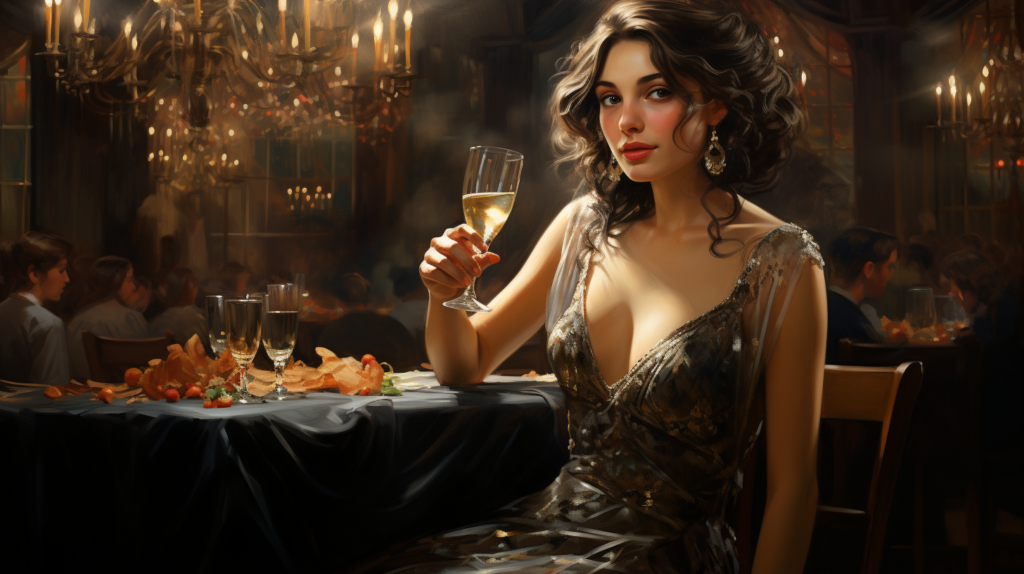
The story of Italian sparkling wines is a fascinating journey through time. It’s a narrative woven with the threads of ancient Roman vineyards, the influence of the Renaissance, and the modern innovation that propelled Italian sparklers onto the world stage.
These wines have evolved alongside Italy’s rich history, mirroring the country’s artistic and cultural transformations.
Understanding their history is key to appreciating the depth and complexity found in every effervescent sip.
Italian sparkling wines, a segment of the wine industry that combines centuries-old traditions with innovative techniques to create some of the world’s most beloved beverages.
From the gentle hills of Veneto to the sun-kissed vineyards of Piedmont, each glass of Italian sparkling wine tells a story of heritage, craftsmanship, and the joyous celebration of life.
KEY REGIONS FOR ITALIAN SPARKLING WINES
Italy’s diverse geography, encompassing alpine slopes, coastal breezes, and fertile plains, creates an unparalleled tapestry for winemaking.
Regions like Veneto, the birthplace of Prosecco, offer a unique combination of climate and soil ideal for Glera grapes. Piedmont, the land of Asti Spumante and Moscato d’Asti, benefits from a perfect blend of sunny days and cool nights. Lombardy, the home of Franciacorta, presents a different terroir, imparting distinct flavors and aromas to its sparkling wines.
Each region contributes its own chapter to the story of Italian sparkling wines.
PROSECCO: ITALY’S ICONIC SPARKLING WINE
Prosecco is not just a wine; it’s a cultural icon. This sparkling wine, originating from Veneto, is a harmonious blend of tradition and modernity. Made primarily from Glera grapes, Prosecco is renowned for its light, refreshing taste with notes of green apple, honeydew, and pear.
The Charmat method, involving secondary fermentation in tanks, gives Prosecco its signature freshness and lively effervescence.
A deep dive into Prosecco reveals a wine that is versatile, approachable, and a staple at celebrations worldwide.
ASTI SPUMANTE AND MOSCATO D’ASTI
The hills of Piedmont are home to the sweet and aromatic Asti Spumante and Moscato d’Asti. Made from Moscato Bianco grapes, these wines are a testament to the region’s winemaking heritage.
Asti Spumante, with its delicate bubbles and sweet floral notes, contrasts with the lighter, frizzante style of Moscato d’Asti.
Both wines embody the essence of Piedmontese winemaking, offering a sweet, aromatic journey that delights the senses.
FRANCIACORTA: ITALY’S ANSWER TO CHAMPAGNE
Franciacorta is Italy’s pride in the realm of high-quality sparkling wines. Produced in Lombardy using the traditional method, the same as Champagne, Franciacorta is a sophisticated and complex wine.
It undergoes secondary fermentation in the bottle, leading to finer bubbles and a richer taste profile. Notes of almond, brioche, and citrus are hallmarks of Franciacorta, reflecting the meticulous process and aging that these wines undergo.
Franciacorta is not just Italy’s answer to Champagne; it’s a declaration of the country’s excellence in winemaking.
LAMBRUSCO: THE SPARKLING RED WINE
Lambrusco, hailing from the Emilia-Romagna region, is a sparkling red that challenges the norm. Known for its vibrant ruby color, Lambrusco is a delightful paradox: a red wine with a sparkling personality.
Its flavor spectrum ranges from dry to sweet, offering notes of berries, cherries, and violets. Lambrusco’s uniqueness lies in its ability to pair well with a wide range of cuisines, making it a versatile choice for wine enthusiasts.
UNDERSTANDING THE WINEMAKING PROCESS
The winemaking process for Italian sparkling wines is as varied as the wines themselves. From the Charmat method, where secondary fermentation occurs in large tanks, to the traditional method of in-bottle fermentation, each technique imparts distinct characteristics to the wine.
Factors like yeast contact, temperature, and aging play critical roles in developing the wine’s flavor profile, bubble size, and overall quality. Understanding these processes sheds light on the craftsmanship and science behind each effervescent bottle.
ITALIAN SPARKLING WINES VS. GLOBAL COMPETITORS
Italian sparkling wines stand out in the global arena for their diversity, quality, and heritage. While Champagne from France is celebrated for its prestige and tradition, Italian sparklers like Prosecco and Franciacorta offer a spectrum of styles and tastes that cater to a wide range of preferences.
The comparison with global competitors underscores Italy’s unique position in the sparkling wine world, combining tradition with innovation to create wines that are both respected and beloved.
FUTURE OUTLOOK FOR ITALIAN SPARKLING WINES
The future of Italian sparkling wines shines brightly. As global appreciation for diverse wine styles grows, Italian sparkling wines are poised for continued success.
Innovations in sustainable winemaking, marketing strategies targeting younger consumers, and the exploration of new markets all contribute to a promising outlook. The potential for growth and evolution in this sector is immense, ensuring that Italian sparkling wines will continue to sparkle on the world stage.
In conclusion, the Italian sparkling wine sector is a dynamic and rich facet of the global wine industry.
With an array of styles, from the refreshing Prosecco to the sophisticated Franciacorta, Italian sparkling wines cater to a broad spectrum of tastes and occasions.
As we have journeyed through the history, regions, and varieties of these effervescent treasures, it becomes clear that Italian sparkling wines are not just beverages; they are a celebration of Italian culture, tradition, and innovation.
So, raise a glass and toast to the sparkling wonders of Italy!
THE SPANISH FLAIR IN SPARKLING WINES
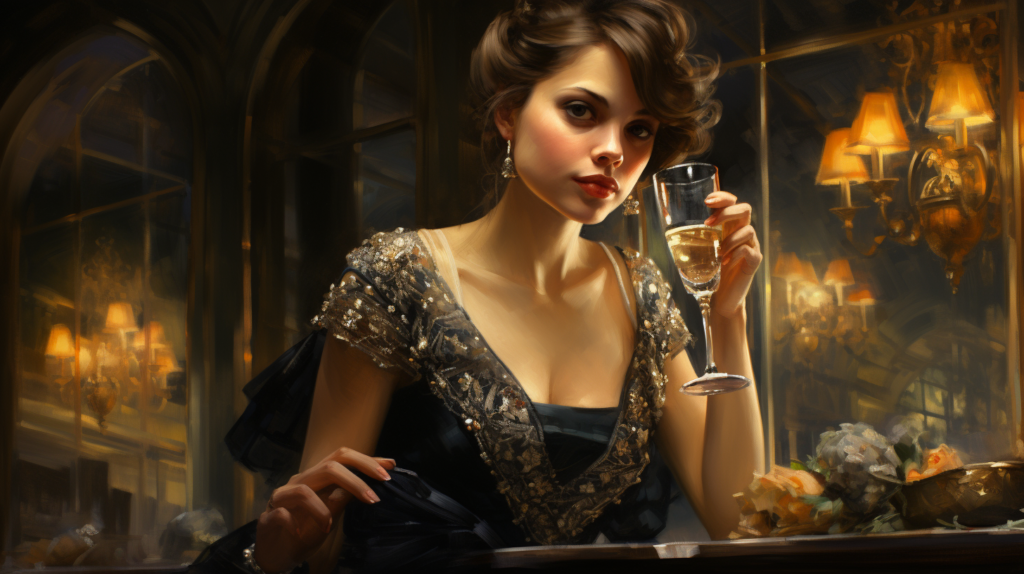
Spain’s contribution to the sparkling wine industry is as diverse as it is profound.
Known for its vibrant culture and rich wine heritage, Spain has earned a prestigious place on the global wine map. Spanish sparkling wines, especially Cava, have carved out a niche, offering a unique combination of quality, tradition, and innovation.
This section explores how Spain’s history, climate, and grape varieties have shaped its sparkling wines into world-class beverages.
CAVA: SPAIN’S ANSWER TO CHAMPAGNE
Cava, the jewel in the crown of Spanish sparkling wines, offers a compelling narrative. Produced primarily in Catalonia, Cava is crafted using the ‘método tradicional,’ a time-honored technique that involves secondary fermentation in the bottle, akin to the method used for Champagne.
This process is essential to developing Cava’s complexity and signature effervescence.
We will delve into the intricate steps of Cava production, the stringent DO (Denominación de Origen) regulations ensuring its quality, and the sensory profile that makes Cava a celebrated global competitor to Champagne.
- The History and Tradition of Cava
- Cava Production: A Blend of Art and Science
- Sensory Profile: Understanding Cava’s Unique Flavors and Aromas
THE REGIONS OF SPAIN SPECIALIZING IN SPARKLING WINES
While Catalonia is synonymous with Cava, other regions in Spain also make significant contributions to the nation’s sparkling wine repertoire. Each region offers a distinct terroir, influencing the character and flavor profile of the sparkling wines produced.
We will explore these regions in-depth, understanding their climatic conditions, soil types, and how these factors impact the winemaking process and the final product.
- Catalonia: The Heartland of Cava
- Valencia and Extremadura: Emerging Sparkling Wine Regions
- The Influence of Terroir on Spanish Sparkling Wines
ANCESTRAL SPARKLING WINES (PÉT NAT), THE NATURAL WINE REVOLUTION IN SPAIN
Spain’s winemaking scene is not just about tradition; it’s also about embracing innovation. The resurgence of the ancestral method, known as ‘pétillant naturel’ or ‘pet-nat’, is a testament to this spirit. This natural wine movement emphasizes minimal intervention and organic practices, producing wines that are expressive, authentic, and often unpredictable.
This section will explore the revival of this ancient winemaking method in Spain, the philosophy behind natural wines, and the unique characteristics of pet-nat that are captivating wine enthusiasts worldwide.
- The Renaissance of the Ancestral Method in Spain
- Philosophy and Practices of Natural Winemaking
- Tasting Notes: The Unpredictable Nature of Pet-Nat Wines
More information for the Pet-Nat Spanish Wine in this link (spanish).
UNIQUE GRAPE VARIETIES IN SPANISH SPARKLING WINES
The allure of Spanish sparkling wines is also due to the diverse grape varieties cultivated in Spain.
Unlike other regions where a few grape types dominate, Spanish winemakers employ a wide range of indigenous and international grapes, each imparting its unique characteristics to the wine.
This section will provide an in-depth look at these grape varieties, their profiles, and how they contribute to the distinctiveness of Spanish sparkling wines.
- Indigenous Grapes: The Backbone of Spanish Sparkling Wines
- International Varieties: Adding Complexity and Diversity
- Grape Profiles: Flavor, Aroma, and Texture Contributions
In conclusion, the realm of Spanish sparkling wines is a magnificent tapestry of history, innovation, and sensory delight. From the traditional and esteemed Cava to the avant-garde pet-nat, the Spanish sparkling wine industry represents a fusion of respect for heritage and a drive for experimentation.
Whether you are a seasoned sommelier or a casual wine lover, Spanish sparkling wines offer a world of discovery, each sip a testament to Spain’s enduring passion for winemaking.
Join us in raising a glass to the sparkling wonders of Spain. Salud!
THE RISE OF NEW WORLD SPARKLING WINES
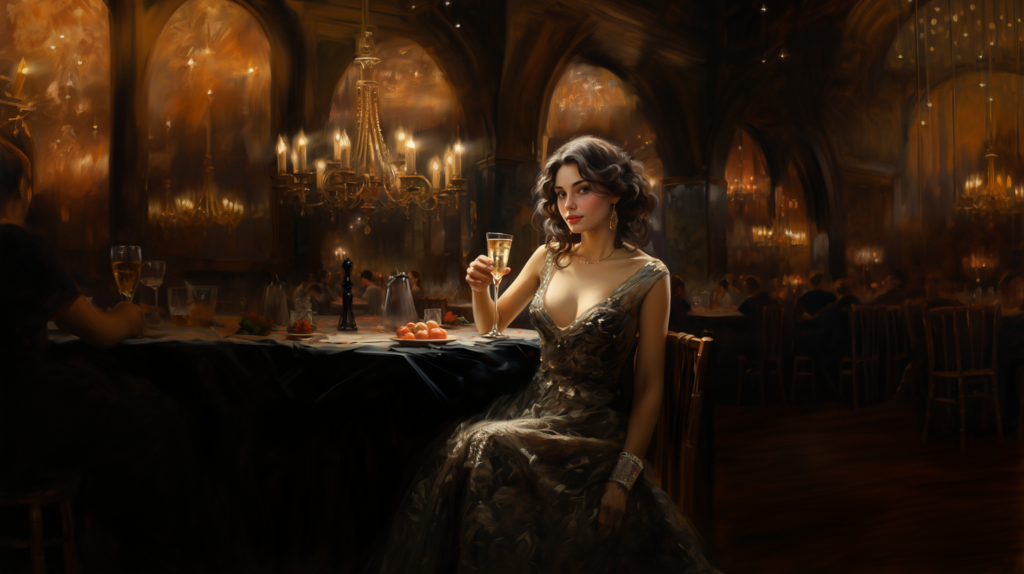
In recent years, the New World – a term referring to wine-producing regions outside Europe, like the Americas, Australia, New Zealand, and South Africa – has emerged as a powerhouse in the production of sparkling wines.
This movement marks a significant shift from the Old World’s dominance, characterized by centuries-old traditions and strict appellation rules.
New World winemakers are not just replicating traditional European styles; they are innovating, experimenting, and adapting to their local environments, creating sparkling wines that are as unique as their terroirs.
PIONEERING INNOVATION
What sets the New World sparkling wines apart is the spirit of experimentation.
Winemakers are not bound by the stringent regulations that often dictate production in traditional regions like Champagne, France. This freedom allows for a variety of production methods, from the classic méthode champenoise to modern techniques like the Charmat method.
The result is a diverse array of sparkling wines, each with its unique profile, complexity, and character.
A TASTE OF DIVERSITY
The diversity in climate and geography across these New World regions has led to an exciting range of sparkling wines. I
n warmer regions, winemakers might harvest grapes earlier to maintain acidity, essential for a good sparkling wine. In cooler areas, the focus might be on achieving the perfect balance of sugar and acidity. This geographical diversity is reflected in the wide range of flavors, from crisp and fruity to rich and toasty.
THE NEW AGE OF BUBBLES
The rise of New World sparkling wines is not just a trend but a testament to the evolving tastes and preferences of wine consumers worldwide. This type of wines offer something for every palate, from dry to sweet, light to complex.
They are also becoming increasingly popular as consumers seek out new experiences and flavors beyond the traditional
DEFINING NEW WORLD WINE REGIONS
The New World wine regions are defined by their relatively recent development in the history of winemaking.
These regions, primarily in the Southern Hemisphere and parts of North America, have been exploring and refining their winemaking techniques over the past few centuries, significantly later than their European counterparts. This late start, however, has not hindered their ability to produce exceptional sparkling wines.
It has allowed them to approach winemaking with a fresh perspective and innovative techniques.
THE IMPACT OF CLIMATE AND SOIL
One of the most defining aspects of these regions is the diversity of their climates and soils. Unlike the more uniform conditions of traditional European wine regions, the New World boasts a wide range of climates, from the cool, foggy coastlines of California to the warm, sunny valleys of South Africa.
This variety allows for a broad spectrum of grape varieties to be cultivated, each imparting unique characteristics to the wines.
EXPERIMENTATION AND ADAPTATION
New World winemakers have the flexibility to experiment with different grape varieties, growing techniques, and production methods. This experimental approach has led to the creation of sparkling wines that are not only unique but also reflective of their local terroir.
The willingness to adapt and innovate is what sets these regions apart and drives the continuous evolution of their sparkling wines.
HISTORICAL OVERVIEW OF SPARKLING WINE PRODUCTION IN THE NEW WORLD
The history of sparkling wine production in the New World is a story of adaptation and innovation.
While the traditional methods of producing sparkling wines were developed in Europe, particularly in regions like Champagne, the New World winemakers have embraced these techniques and added their own local twist.
This fusion of old and new has resulted in sparkling wines that honor traditional craftsmanship while showcasing the unique characteristics of their respective regions.
PIONEERS AND INNOVATORS
The journey of sparkling wine in the New World began with European immigrants who brought their winemaking knowledge and traditions.
Over time, these practices were adapted to suit the local climates, grape varieties, and consumer preferences. In regions like California, this meant experimenting with different grape varieties and production methods to create sparkling wines that could compete with the best from Europe.
A GROWING INDUSTRY
The growth of the sparkling wine industry in the New World has been a gradual process.
Initially, these wines were produced in small quantities, often overshadowed by the more established European sparkling wines. However, as the quality and reputation of New World sparkling wines grew, so did their production and global presence.
Today, they are recognized and celebrated for their quality, diversity, and innovation.
KEY DIFFERENCES BETWEEN OLD AND NEW WORLD SPARKLING WINES
One of the key differences between Old and New World sparkling wines lies in their viticulture and winemaking techniques.
In the New World, winemakers often have more freedom to experiment with different grape varieties, growing methods, and production techniques.
This has led to the development of sparkling wines that are not just imitations of their European counterparts but unique expressions of their local terroirs.
FLAVOR PROFILES AND CHARACTERISTICS
New World sparkling wines tend to have more pronounced fruit flavors and a bolder profile compared to the typically more subtle and refined Old World sparkling wines.
This difference in flavor is largely due to the varying climates and soil types found in the New World, which impact the characteristics of the grapes and, consequently, the wine.
THE INFLUENCE OF TERROIR
Terroir, the combination of factors like soil, climate, and topography that gives wine its character, plays a significant role in differentiating Old and New World sparkling wines.
In the New World, the diverse range of terroirs results in a wide variety of sparkling wines, each with its distinct flavor profile and character.
DIVERSE GRAPE VARIETIES AND THEIR CHARACTERISTICS
The New World regions cultivate a wide array of grape varieties for their sparkling wines.
While some regions favor traditional varieties like Chardonnay and Pinot Noir, others experiment with local or less conventional varieties, adding complexity and uniqueness to their wines.
THE INFLUENCE OF GRAPE VARIETIES
The choice of grape varieties has a significant impact on the flavor, aroma, and texture of the sparkling wine.
For example, Chardonnay tends to produce sparkling wines with crisp acidity and citrus flavors, while Pinot Noir adds body and red fruit notes.
The use of local or less common varieties allows winemakers to create sparkling wines with unique flavor profiles that reflect the characteristics of their region.
BLENDING FOR COMPLEXITY
Many New World sparkling wines are made from a blend of different grape varieties. This blending allows winemakers to balance the various characteristics of the grapes, creating wines that are complex, well-rounded, and harmonious.
The art of blending is a key aspect of sparkling wine production, allowing winemakers to showcase their skill and creativity.
SPOTLIGHT ON CALIFORNIA’S SPARKLING WINES
California, known for its diverse climate and innovative winemaking, has become a leading producer of New World sparkling wines. The state’s sparkling wines are celebrated for their quality, variety, and unique Californian character.
California’s sparkling wine regions, including Napa Valley, Sonoma County, and the Central Coast, each offer distinct styles of sparkling wines. Napa Valley, for example, is known for its elegant and refined sparkling wines, while Sonoma County produces sparkling wines with a more fruit-forward and approachable style.
California winemakers are at the forefront of innovation in sparkling wine production. They are constantly experimenting with different grape varieties, production methods, and aging techniques to create sparkling wines that are not only delicious but also reflective of the state’s diverse terroir.
Many California wineries are also leading the way in sustainable and organic winemaking practices. This commitment to environmental stewardship is reflected in the quality of their sparkling wines, which are often characterized by their purity, freshness, and expression of the natural environment.
THE EMERGENCE OF SPARKLING WINES IN SOUTH AMERICA
South America, particularly countries like Argentina and Chile, has recently emerged as a significant player in the sparkling wine market. The region’s unique climate and terroir, combined with a growing interest in winemaking, have led to the production of high-quality sparkling wines.
South American sparkling wines are often made from a variety of grape varieties, both traditional and local. For example, in Argentina, the use of Malbec for sparkling wine production has resulted in unique and flavorful wines that reflect the country’s winemaking heritage.
South American winemakers are blending traditional European techniques with local innovations to create sparkling wines that are both familiar and distinctly South American. This fusion of old and new has resulted in sparkling wines that are gaining recognition and acclaim on the global stage.
The Andes Mountains play a crucial role in the terroir of South American wine regions. The high altitude, intense sunlight, and cool nights create ideal conditions for growing grapes with balanced acidity and concentrated flavors, essential for producing high-quality sparkling wines.
AUSTRALIAN AND NEW ZEALAND’S CONTRIBUTION TO SPARKLING WINES
Australia and New Zealand have become pivotal players in the sparkling wine arena, challenging traditional European domains with their innovative approaches and distinct flavors.
In Australia, regions like Tasmania and the Yarra Valley are producing sparkling wines that rival their Old World counterparts in complexity and quality.
Tasmanian sparkling wines, in particular, are celebrated for their bright acidity and rich fruit flavors, born from the cool climate and unique terroir of the island.
New Zealand, meanwhile, is gaining acclaim for its method traditionnelle sparkling wines. The Marlborough region, known for its exceptional Sauvignon Blanc, is also producing sparkling wines with remarkable complexity and finesse.
The cool climate, combined with diverse soil types, contributes to the creation of sparkling wines with a balance of acidity and fruitiness, often complemented by refined yeast characters from extended lees aging.
These New World regions are not just imitating traditional European styles but are also experimenting with local grape varieties and production methods, adding a unique twist to the global sparkling wine narrative.
This section will dive into the specifics of the grape varieties used, the microclimates, and the winemaking techniques that set these regions apart.
UNIQUE METHODS OF SPARKLING WINE PRODUCTION
The allure of sparkling wine largely stems from its unique production methods. Each method imparts distinctive characteristics to the wine, influencing its flavor, texture, and complexity.
The traditional method, or méthode champenoise, used in Champagne and many high-quality sparkling wines, involves a secondary fermentation in the bottle, which creates the wine’s signature bubbles. T
his process also allows for the development of complex flavors through autolysis, as the wine ages on its yeast lees.
In contrast, the Charmat method, often used for Prosecco, involves conducting the secondary fermentation in large tanks, which preserves the fresh and fruity characteristics of the grapes.
This method is quicker and less labor-intensive than the traditional method, making it suitable for producing lighter, more approachable sparkling wines.
Beyond these, there are other techniques like the transfer method and the ancestral method, each offering a different perspective on sparkling wine production.
This section will delve deep into these methods, explaining how they affect the wine’s aroma, flavor profile, and overall character. It will also touch upon the technological advancements in sparkling wine production and how they are shaping the future of this effervescent beverage.
THE ROLE OF TERROIR IN FLAVOR PROFILES
Terroir – the French term that encapsulates the geography, geology, and climate of a vineyard – plays a crucial role in defining the flavor profile of sparkling wines. This concept is not just about the soil but also includes the local climate, the slope of the land, and even the vineyard’s microclimate.
For instance, the chalky soils of Champagne are essential in imparting the minerality and acidity that Champagne is famous for, while the cooler climates of regions like Tasmania contribute to the crispness and freshness of their sparkling wines.
This section will explore how different terroirs around the world influence the taste, aroma, and texture of sparkling wines. It will cover how winemakers interact with their environment to produce sparkling wines that reflect the essence of their terroir, creating a beverage that tells the story of its origin.
CRITICS’ VIEWS ON THE EVOLUTION OF NEW WORLD SPARKLING WINES
The sparkling wine world is continuously evolving, with New World regions playing a significant role in this transformation.
Critics and wine experts have noted how countries like Australia, New Zealand, and the United States are not only challenging traditional European dominance in sparkling wine production but are also bringing new ideas and flavors to the table.
This section will delve into the opinions and analyses of renowned wine critics regarding the evolution of New World sparkling wines. It will cover topics such as the impact of innovative winemaking techniques, the exploration of new grape varieties, and the future trends in sparkling wine production.
The insights from these experts will provide a deeper understanding of the current state of the sparkling wine industry and its potential trajectory.
A TOAST TO THE WORLD OF SPARKLING WINES

Sparkling wines are not just beverages; they are a symphony in a bottle, encapsulating tradition, innovation, and celebration.
From the iconic hills of Champagne to the picturesque vineyards of Italy, each region offers a unique story told through its sparkling creations. This guide is your comprehensive journey into the heart of these effervescent wonders, revealing the intricacies and craftsmanship behind each bubbly sip.
The journey of creating a sparkling wine is a remarkable blend of art and science. It involves precise steps that require skill, patience, and a deep understanding of winemaking.
Here, we’ll explore each stage, unveiling the meticulous process that transforms humble grapes into the world’s most beloved sparklers.
HARVESTING AND SELECTING THE RIGHT GRAPES
The first step in making sparkling wine is the careful selection and harvesting of grapes.
Unlike still wines, grapes for sparkling wines are picked earlier in the season to ensure higher levels of acidity and lower sugar content, which are essential for the balance and structure of the final product.
Grape Varieties: Different regions use different grape varieties for their sparkling wines. For instance, Champagne typically uses Chardonnay, Pinot Noir, and Pinot Meunier. Each grape variety contributes distinct characteristics to the wine, such as body, aroma, and flavor nuances.
Harvesting Techniques: The harvesting process, often done by hand to preserve the grape’s integrity, is crucial. The grapes must be picked at the optimum time to achieve the desired balance of acidity, sweetness, and flavor.
THE TRADITIONAL METHOD VS. THE TANK METHOD
After harvesting, the grapes undergo primary fermentation, transforming them into alcohol.
This is where the paths diverge for the two primary sparkling wine production methods.
The Traditional Method (Méthode Champenoise):
- Secondary Fermentation in the Bottle: After the initial fermentation, the wine undergoes a second fermentation in the bottle. This is achieved by adding a mixture of yeast and sugar, known as liqueur de tirage.
- Aging and Yeast Contact: The bottles are stored horizontally, allowing the wine to age on its yeast lees. This aging can last from 15 months to several years, depending on the wine style.
- Riddling and Disgorging: The yeast sediment is gradually moved to the neck of the bottle through a process called riddling. The sediment is then expelled from the bottle in a process known as disgorging.
The Tank Method (Charmat Method):
- Secondary Fermentation in Tanks: Here, the second fermentation occurs in large, pressurized tanks. This method is faster and more cost-effective, ideal for producing lighter, fruitier sparkling wines.
- Controlled Environment: The tank method allows winemakers to control the temperature and pressure more precisely, ensuring consistency and quality.
THE ROLE OF YEAST AND SUGAR IN FERMENTATION
Yeast and sugar are pivotal in the fermentation process.
The yeast consumes the sugar, producing alcohol, carbon dioxide (which forms the bubbles), and various flavor compounds.
Yeast’s Impact:
- Flavor Development: The type of yeast used can significantly affect the wine’s flavor. Some yeasts impart fruity notes, while others contribute more complex, bready aromas.
- Autolysis: During aging, the breakdown of yeast cells (autolysis) releases compounds that add richness and complexity to the wine, contributing flavors like toast, nuts, and brioche.
Sugar’s Role:
- Controlling Sweetness: The amount of sugar added during the dosage (the final addition of a sugar solution before corking the wine) determines the sweetness level of the sparkling wine, ranging from brut (dry) to doux (sweet).
The world of sparkling wines is as diverse as it is enchanting. Understanding the intricate process from vine to glass enhances the appreciation of each bubble in your flute.
Whether it’s a toast to a special occasion or a casual sip on a sunny day, sparkling wines offer a versatile and delightful experience.
May this guide inspire your next sparkling wine adventure, enriching your moments of celebration with knowledge and joy.
Cheers to the wondrous world of sparkling wines!
SPARKLING WINES FOR EVERY OCCASION
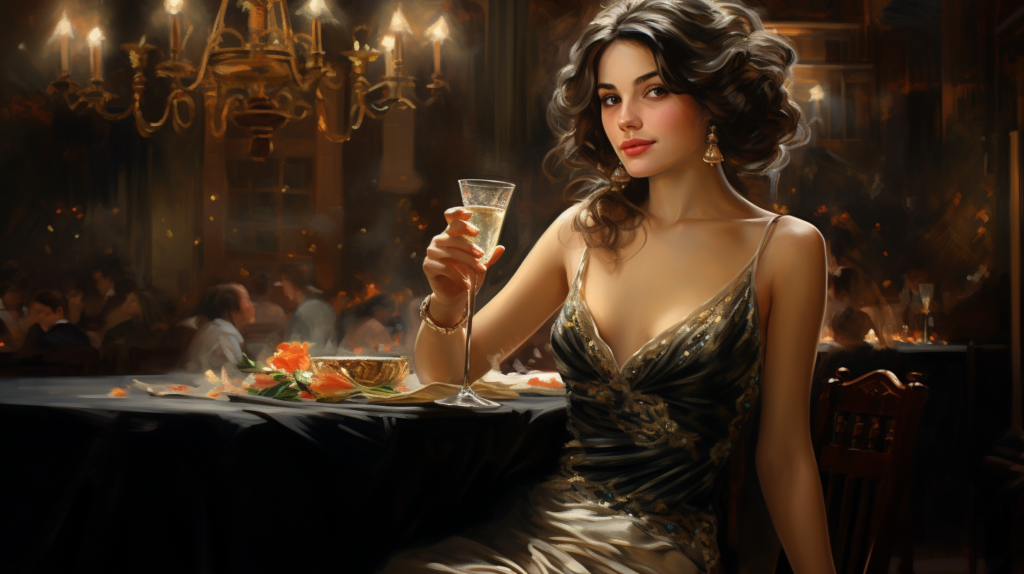
Sparkling wines are versatile, fitting seamlessly into a spectrum of events from grandiose celebrations to quiet, intimate gatherings.
Understanding which type of sparkling wine suits a particular occasion can significantly enhance the experience for you and your guests.
In the realm of wines, sparkling varieties stand out as symbols of festivity and luxury.
From the prestigious Champagne to the playful Prosecco, and from the revered vintage to the reliable non-vintage, each type of sparkling wine brings its own story and character to the table. Understanding these subtleties allows you to choose the perfect bottle for every occasion, elevating your celebrations and enriching your moments of enjoyment.
So, whether you’re raising a glass to mark a special occasion or simply savoring the everyday joys, let sparkling wines add a touch of sparkle to your life.
CHOOSING A SPARKLING WINE FOR CELEBRATIONS
Selecting the right sparkling wine for celebrations is crucial. The choice depends on the nature of the event, the preferences of your guests, and the accompanying menu.
- Champagne for Grand Celebrations: Nothing spells a grand celebration like Champagne. This wine, originating from the Champagne region of France, is known for its complexity and elegance. Ideal for weddings, milestone birthdays, or any significant event where you want to make a statement.
- Prosecco for Casual Gatherings: Prosecco, with its light, fruity, and somewhat sweeter profile, is perfect for more casual celebrations. It’s a great choice for brunches, casual get-togethers, or as a welcome drink at parties.
- Cava for a Touch of Sophistication: Cava, from Spain, offers a wonderful balance of refinement and approachability. It is an excellent option for corporate events, anniversaries, or when you want a sophisticated touch without the extravagance of Champagne.
Pairing Tips: The key to pairing sparkling wine with food is to consider the body and sweetness of the wine. Rich, creamy dishes pair well with fuller-bodied sparkling wines like vintage Champagne, while lighter, fruit-based desserts go well with sweeter options like Moscato d’Asti.
BUDGET-FRIENDLY BUBBLES: AFFORDABLE SPARKLING WINE OPTIONS
Enjoying a delightful sparkling wine doesn’t necessarily mean spending a fortune. There are numerous high-quality, budget-friendly options:
- Prosecco: Italian Prosecco is not only affordable but also versatile. It ranges from dry (Brut) to sweeter (Demi-Sec) styles, making it suitable for a wide range of palates and occasions.
- Cava: Spanish Cava is another excellent budget-friendly option. Made using the same traditional method as Champagne, it offers complexity and depth without the high price tag.
- American Sparkling Wines: The United States, particularly regions like California, Oregon, and New York, is home to some fantastic sparkling wines that are budget-friendly and of great quality. These wines often bring a unique New World twist to traditional methods.
Shopping Tip: When looking for budget-friendly options, explore sparkling wines from emerging regions or lesser-known producers. These often offer excellent value for money.
VINTAGE VS NON-VINTAGE: WHAT’S THE DIFFERENCE?
The distinction between vintage and non-vintage sparkling wines is significant and can greatly influence your choice:
- Vintage Sparkling Wines: These are produced from grapes harvested in a single, specific year. They are typically made only in exceptional years and are aged longer. Vintage sparkling wines are known for their complexity, depth of flavor, and potential for aging. They are ideal for collectors, enthusiasts, or as special gifts.
- Non-Vintage Sparkling Wines: Non-vintage wines blend grapes from multiple years. This practice allows the winemaker to achieve a consistent house style year after year. Non-vintage sparkling wines are generally more accessible, both in terms of price and taste profile, making them excellent for regular consumption.
Key Insight: While vintage wines offer an exploration into a specific year’s weather and its impact on the wine, non-vintage wines showcase the skill of the winemaker in blending different vintages to achieve a consistent and enjoyable product.
In summary, the world of sparkling wines offers a fascinating array of choices suited to various occasions, tastes, and budgets.
By understanding the characteristics of different types of sparkling wines and the distinctions between vintage and non-vintage, you can enhance your wine-drinking experience and make informed choices that suit your personal preferences and the nature of your celebrations.
So, the next time you’re selecting a bottle, remember this guide and choose a sparkling wine that will add the perfect effervescence to your occasion.
Cheers to the world of bubbles!
PRESERVING THE SPARKLE: STORAGE AND SERVING

Ensuring that your sparkling wine retains its signature effervescence and flavor is an art. This section is dedicated to imparting knowledge on the proper storage and serving techniques that are crucial to preserving the quality and character of your sparkling wine.
It’s evident that sparkling wines are not just beverages; they are a celebration of craftsmanship, tradition, and the joyous moments in life.
The care taken in storing, serving, and understanding these wines can significantly enhance your drinking experience. Whether raising a glass to mark a special occasion or simply savoring the complex flavors, remember that sparkling wines are a testament to the beauty and diversity of the world of wines.
This guide aims to serve as a comprehensive resource, helping you to not only enjoy sparkling wines to the fullest but also to appreciate the meticulous care that goes into each bottle.
Here’s to many more sparkling moments!
HOW TO STORE SPARKLING WINE PROPERLY
The way you store your sparkling wine can significantly impact its taste and longevity. Here, we detail the essential factors and best practices for optimal storage.
Ideal Conditions for Storage
- Temperature Consistency: Understand the importance of maintaining a consistent temperature and the ideal range for storing sparkling wines.
- Humidity and Its Role: Learn about the role of humidity in preserving the cork and preventing oxidation.
- Positioning of the Bottle: Discover why the orientation of the bottle matters and the debate between horizontal versus vertical storage.
The Impact of Light and Vibration
- Protection from Light: Delve into the effects of light exposure, particularly UV light, on sparkling wines and how to shield them effectively.
- Mitigating Vibration Effects: Uncover how vibrations can disturb the sediment in sparkling wines and ways to minimize this risk.
Long-Term vs. Short-Term Storage
- Strategies for Aging: Explore the potential benefits and risks of aging sparkling wines and how to decide if a wine is suitable for long-term storage.
- Tips for Short-Term Preservation: Practical advice for those looking to store sparkling wines for immediate or near-future consumption.
SERVING TEMPERATURE AND GLASSWARE ETIQUETTE
The presentation of sparkling wine is as important as its storage. This section covers the subtleties of serving temperature and the art of selecting the perfect glassware.
Optimal Serving Temperatures
- Temperature Ranges for Different Sparkling Wines: Detailed guidelines on the ideal serving temperatures for various types of sparkling wines, from Champagne to Prosecco and Cava.
- Effects of Temperature on Aroma and Flavor: Insights into how serving temperature affects the sensory experience of sparkling wine.
Choosing the Right Glassware
- Types of Sparkling Wine Glasses: An overview of different glassware options, including flutes, coupes, and tulip glasses, and their impact on the wine’s characteristics.
- The Science Behind Glassware Shape: Understand how the shape of a glass can influence the bubble dynamics and aroma concentration of sparkling wine.
The Art of Pouring
- Techniques for the Perfect Pour: Step-by-step instructions on pouring sparkling wine to preserve its carbonation and avoid overflow.
- The Role of Aeration: Discussion on whether and how aeration affects the tasting experience of sparkling wines.
TO DECANT OR NOT TO DECANT: SPARKLING WINE MYTHS DEBUNKED
There are numerous myths surrounding the consumption and enjoyment of sparkling wines. In this section, we demystify these myths, focusing on the practice of decanting and other misconceptions.
The Decanting Debate
- Pros and Cons of Decanting Sparkling Wine: Examination of scenarios where decanting could enhance or detract from the sparkling wine experience.
- When Decanting is Advisable: Guidelines on specific types of sparkling wines that may benefit from decanting.
Busting Common Myths
- Spoon in the Bottle and Other Myths: Addressing common myths like the silver spoon preservation method and revealing the truth behind them.
- Carbonation Preservation Techniques: Evaluating various methods claimed to preserve carbonation and their effectiveness.
Expert Tips and Tricks
- Insider Advice for Enhancing Enjoyment: A collection of lesser-known tips and recommendations from sparkling wine experts and sommeliers.
- Pairing Food with Sparkling Wine: Suggestions on food pairings that complement and enhance the flavors of different sparkling wines.
Cheers to your journey through the effervescent and captivating realm of sparkling wines!
THE FUTURE OF SPARKLING WINE

The future of sparkling wine shines as brightly as its lively effervescence.
This industry, steeped in tradition, is now embracing modernity, driven by technological advancements, environmental concerns, and changing consumer tastes. As we look to the future, we see a landscape of sparkling wine that is diverse, sustainable, and exciting.
Whether it’s the implementation of advanced technologies or the shift towards organic practices, the sparkling wine industry is at the cusp of a new era.
As we look to the future, it’s clear that this beloved beverage will continue to captivate and delight us, evolving in ways that honor its rich past while embracing the possibilities of tomorrow.
Whether you’re toasting a special occasion or enjoying a quiet moment of reflection, sparkling wine offers a universe of flavors and experiences to explore.
INNOVATIONS IN SPARKLING WINE PRODUCTION
Innovation in sparkling wine production is a blend of art and science. In recent years, winemakers have been pioneering new methods and technologies to enhance the quality, flavor, and sustainability of their products.
- Precision Viticulture: This cutting-edge approach uses data analytics and GPS mapping to understand vineyard conditions in unprecedented detail. It allows winemakers to optimize grape quality and yield, ensuring that each bottle of sparkling wine is a testament to precision and care.
- Sustainable Practices: There’s a growing trend in minimizing the environmental impact of wine production. Techniques like water conservation, solar energy, and organic farming are not just eco-friendly choices but also add a new dimension of authenticity and quality to the sparkling wine.
- Yeast Innovation: The type of yeast used in fermentation significantly impacts the flavor profile of sparkling wine. Innovative yeast strains are being developed to enhance specific characteristics, such as aroma, complexity, and texture, pushing the boundaries of what sparkling wine can be.
- Aging Techniques: The aging process is crucial for developing complexity in sparkling wines. Winemakers are experimenting with different aging periods and conditions to create unique flavor profiles, including the use of non-traditional materials for aging, like ceramic or concrete.
THE GROWING TREND OF ORGANIC AND BIODYNAMIC SPARKLING WINES
In response to a global call for sustainability and health-conscious choices, the sparkling wine industry is seeing a significant rise in organic and biodynamic practices.
- Organic Sparkling Wines: These wines are made from grapes grown without synthetic pesticides or fertilizers. The move towards organic viticulture is not just an environmental choice but also a means to achieve pure expressions of terroir in the wine.
- Biodynamic Practices: Going a step further, biodynamic viticulture treats the vineyard as a single, self-sustaining organism. This holistic approach involves following a planting calendar aligned with lunar cycles and using natural preparations for soil health. The result is sparkling wine that is not only eco-friendly but also rich in authentic, place-specific flavors.
- Consumer Demand: The market for organic and biodynamic sparkling wines is expanding rapidly. Consumers are increasingly aware of the environmental impact of their choices and are seeking wines that align with their values. This shift is driving winemakers to adopt practices that are kind to the earth and good for the soul.
PREDICTING THE NEXT BIG THING IN SPARKLING WINE
The future trends in sparkling wine are as dynamic as the drink itself. As we look ahead, several key developments are poised to shape the industry.
- Emerging Regions: While regions like Champagne and Prosecco are synonymous with sparkling wine, new areas are gaining acclaim. Places like England, South Africa, and even unexpected regions in Asia are producing high-quality sparkling wines, challenging the traditional dominance of established regions.
- Experimental Styles: There’s a growing appetite for unconventional sparkling wines. This includes everything from sparkling reds to natural sparklers with minimal intervention. These novel styles cater to a more adventurous consumer base seeking unique wine experiences.
- Technology in Tasting: Augmented reality, virtual tastings, and AI-based recommendation engines are becoming integral to the consumer experience. These technologies not only enhance the way we enjoy sparkling wine but also help producers and retailers connect with customers in innovative ways.
- Sustainability as a Standard: The future of sparkling wine is undoubtedly green. Sustainable practices are expected to become the norm rather than the exception, as both producers and consumers prioritize the health of our planet.
Cheers to the future of sparkling wines, where every bubble tells a story of tradition, innovation, and the enduring joy of discovery.
BEYOND THE GLASS: SPARKLING WINE IN CULTURE

Sparkling wine has long transcended its role as merely a beverage; it is deeply woven into the cultural fabric of societies worldwide. Its bubbles have come to represent celebration, achievement, and even romance.
This section delves into the multifaceted cultural presence of sparkling wine, uncovering its symbolic significance and its pervasive influence across various forms of art and social customs.
They are deeply embedded in our films, literature, celebrations, and increasingly in tourism. This guide invites you to not just taste but also to experience and understand the cultural richness that sparkling wines bring to our lives. Whether you’re a connoisseur or a casual enthusiast, there’s always more to discover in the effervescent world of sparkling wines.
SPARKLING WINE IN FILM AND LITERATURE
The presence of sparkling wine in film and literature is both prominent and influential.
It often serves as a symbol of opulence, celebration, or pivotal moments within a narrative. In literature, authors like F. Scott Fitzgerald have used champagne as a metaphor for the fleeting nature of happiness, while in cinema, it’s often a hallmark of pivotal celebrations or turning points.
This subsection explores the instances, themes, and symbolism associated with sparkling wine in these artistic mediums, showcasing its role in storytelling and mood setting.
CELEBRATORY CUSTOMS AND SPARKLING WINE
From the pop of the cork at a wedding to the clinking of glasses at New Year’s Eve, sparkling wine is integral to many of our most cherished celebratory customs.
This section investigates how different cultures have embraced sparkling wine in their rituals and celebrations, offering a glimpse into its role in marking life’s significant moments. We’ll look at traditions from around the world, highlighting how sparkling wine transcends borders in bringing people together in moments of joy and celebration.
SPARKLING WINE TOURISM: VISITING THE VINEYARDS
Sparkling wine tourism is a growing trend, offering enthusiasts a chance to explore the regions where their favorite bottles are produced.
From the rolling hills of Champagne in France to the picturesque vineyards of Prosecco in Italy, this subsection will guide you through the world’s most renowned sparkling wine regions. Learn about the unique experiences each region offers, from tasting sessions to vineyard tours, and understand how these visits enhance the appreciation of sparkling wine.

In this comprehensive exploration, we have journeyed through the vibrant and effervescent world of sparkling wines.
From its rich history and diverse production methods to its cultural significance and future prospects, sparkling wine remains a symbol of celebration, craftsmanship, and sensory delight. Whether you are a connoisseur or a casual enthusiast, the world of sparkling wine offers endless opportunities for discovery and enjoyment.
Cheers to the bubbles that bring us together and elevate our moments!
